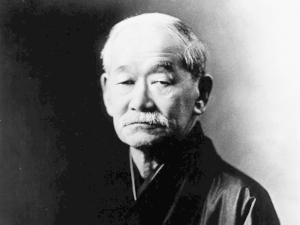Judo (柔道 , literally. “the gentle way”) is a system of physical, mental, and moral education.
Judo’s core principles are:
- “Seiryoku-Zenyo” (精力善用, “maximum efficiency, minimum effort” or “best use of energy”)
- “Jita-Kyoei” (自他共栄, “mutual benefit and welfare”)

Judo was created in 1882 by Jigoro Kano (1860–1938) as a method for preserving Japanese culture at a time when martial arts were disappearing from the country. Kano combined aspects of several Japanese jujutsu styles, and removed harmful techniques such as striking or weapons. (Some of these were preserved as part of kata demonstrations.) Competition techniques include throws, pins (similar to wrestling), chokes, and joint locks.
Judo became an Olympic sport in 1964 and continues to be practiced around the work today.
Judo is practiced in many ways:
- Uchikomi (打ち込み, repetition training) - Students build muscle memory through many iterations of the same technique.
- Randori (乱取り, free pracitice) - Players spar using techniques they know with realistic, dynamic combinations and reactions.
- Shiai (試合, competition) - Opponents begin standing, with the goal of throwing their opponent to the ground with force, speed, and control. Doing so can yield an instant victory, and judo match es can be very short. If the throw attempt is imperfect, they may continue on the ground applying pins, or getting their opponent to submit with a choke or arm-bar.
- Kata (形, forms) - Players execute a prescribed set of techniques, with specific demonstration of principles and outcomes.
Learn more about judo at:




